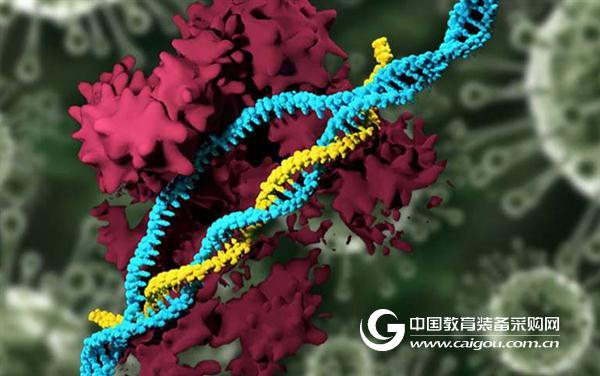Researchers at the Massachusetts Institute of Technology have developed nanoparticles that deliver the CRISPR gene editing system to modify genes in mice. This technology will help the treatment of many diseases including liver disease.

In a research article published on November 13th in Nature Biotechnology, researchers use new delivery technologies to knock out about 80% of genes in liver cells, the best success rate for adult animal CRISPRs. . Daniel Anderson, author of the article, said, "What's really exciting is that we have shown that nanoparticles can be used to permanently edit DNA in the liver of adult animals."
PCSK9 is a targeted gene in this study, and its mutant version is associated with a rare human disease, dominant familial hypercholesterolemia. The FDA recently approved two antibody drugs to inhibit PCSK9. However, these antibodies need to be taken on a regular basis to provide treatment for the rest of the patient's life. According to MIT research, the new nanoparticle permanently edited the gene after one treatment. This technology also provides hope for the treatment of other liver diseases.
Previous delivery method
Many scientists are working hard to develop safe and effective ways to deliver the components needed for CRISPR. In most cases, researchers rely on viruses to carry the Cas9 gene as well as the RNA guide chain. However, once a specific virus is used, the patient produces antibodies and cannot be used again. In addition, antibodies pre-existing to the virus are present in some patients.
In 2014, the research team developed a non-viral vector system that provides the first demonstration of the treatment of liver tyrosinemia with CRISPR in adult animals. However, this type of delivery requires high pressure injections, which can also cause some damage to the liver.
New delivery method design
The latest study uses both nanoparticle delivery methods for both Cas9 and RNA guidance systems. In order to deliver the RNAs guide strand, the researchers must first chemically modify the RNA to prevent it from decomposing by the enzymes in the body before reaching the destination.
The structure of the complex formed by the Cas9 and RNA guide strands was analyzed, and it was found which parts of the chemically modified RNA guide strand could not interfere with the binding of the two molecules. Based on this, the researchers created and tested many possible combinations of modifications.
The first author, Hao Yin, said: "We use the structure of the Cas9 and sgRNA complexes as a guide to find out that we can modify up to 70% of the RNA guide strand. We can modify it without affecting the binding of Cas9 and sgRNA. This enhanced modification does increase activity."
Reprogramming the liver
The researchers packaged these modified RNA guide strands into lipid nanoparticles and injected them into mice containing nanoparticles encoding Cas9 mRNA. They first knocked out several different genes expressed by hepatocytes for experiments, but the main focus was on the cholesterol-regulating gene PCSK9. The researchers were able to eliminate 80% of the PCSK9 gene and make PCSK9 protein undetectable in these mice. They also found that the total cholesterol level of the treated mice decreased by 35%.
Researchers are now working to find other liver diseases that may benefit from this approach and apply these methods to patients.
Anderson said, "I want to use synthetic nanoparticles to become a powerful tool to specifically shut down genes, not only for PCSK9 but also for other diseases. The liver is a very important organ and a source of disease for many people. If you can Reprogramming your liver DNA, we think there are many diseases that can be solved."
Shanghai Chuangsai Technology has excellent performance, interleukin cytokines, fetal bovine serum, electrophoresis equipment scientific instruments, raw material drug standards, chemical reagents, cell culture consumables, Shanghai Chuangsai, mass products special promotions, welcome to inquire!
The electric Nursing Bed is used for the treatment and rehabilitation of patients or the elderly. At the beginning, it was mainly used in hospitals. With the development of the economy, electric nursing beds have also entered ordinary households, becoming a new choice for home care, greatly reducing the burden on nursing staff.
Electric nursing bed,in addition to lying flat, the back deck of the bed can be raised and lowered within the range of 0°-80°, and the foot deck can be raised and lowered within the range of 0°-50°. Patients can choose a suitable angle of sitting on the bed to meet the needs of eating, taking medicine, drinking water, washing feet, reading and newspaper, watching TV and moderate physical exercise.
Our selection features - Electric Nursing Bed, Manual Nursing Bed, Nursing Home Bed, Hospital Nursing Bed, etc. We really do have a nursing bed to suit anyone and their requirements.
Electric Adjustable Beds,Hi Lo Homecare Bed,Ultra Low Homecare Bed,Hospital Nursing Care Bed
Jiangmen Jia Mei Medical Products Co.,Ltd. , https://www.jiamei-medical.com
![<?echo $_SERVER['SERVER_NAME'];?>](/template/twentyseventeen/skin/images/header.jpg)